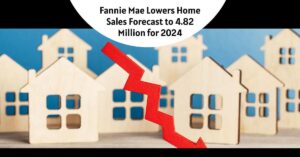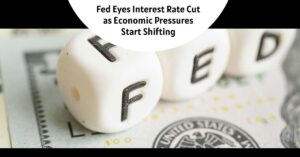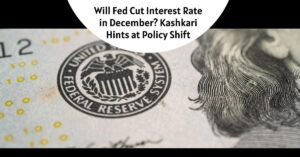Fannie Mae's Economic & Strategic Research (ESR) Group recently revised its forecast for total U.S. home sales in 2024 downward to 4.82 million. This slight decrease reflects a more cautious outlook on the housing market amid a confluence of economic factors.
Reasons for the Downturn
The ESR Group's decision to lower its forecast likely stems from several key considerations:
- Rising Interest Rates: The significant increase in mortgage rates since the beginning of 2024 has dampened affordability for many potential buyers. According to the Mortgage Bankers Association, the average 30-year fixed mortgage rate has climbed from 3.1% in December 2023 to 6.8% in June 2024. This translates to a hundreds of dollars difference in monthly payments for a typical mortgage, effectively pushing a segment of buyers out of the market, particularly first-time homebuyers who may have smaller down payments and are more sensitive to interest rate fluctuations.
- Economic Growth Slowdown: The ESR Group predicts a slowdown in overall economic growth throughout 2024. This is due to a number of factors, including rising inflation, tightening monetary policy by the Federal Reserve, and potential geopolitical instability. A slowdown in economic growth can lead to decreased consumer confidence and a reluctance to take on significant debt, further impacting housing demand. Consumers may choose to postpone major purchases like homes in order to prioritize necessities or build up emergency savings.
- Inventory Imbalance: While inventory levels have risen compared to the historic lows of the past two years, they may not be increasing at a pace to meet potential demand. This imbalance could keep prices high, further limiting affordability. A shortage of available homes for sale creates an environment of bidding wars, driving prices up and making it even more difficult for buyers to enter the market. Additionally, potential sellers who are hesitant to list their properties due to the aforementioned lock-in effect can exacerbate the inventory shortage.
ESR Group: A Trusted Source
The ESR Group is a highly respected entity within the housing industry. Their forecasts are based on rigorous analysis of current and historical economic data, housing market trends, and mortgage market fluctuations. While their predictions are subject to change as circumstances evolve, they provide valuable insights for market participants.
The Broader Impact
A downward revision in home sales forecasts has ripple effects throughout the housing market and the wider economy. Here's a breakdown of the potential consequences:
- Mortgage Originations: A decrease in home sales is likely to lead to a decline in mortgage originations, impacting lenders' profits. Fewer home sales mean fewer mortgages to originate, translating to a significant decrease in revenue for mortgage lenders. This could lead to a reduction in staffing levels, a tightening of lending standards, and a shift in focus towards other loan products such as refinances or home equity loans.
- Home Prices: The forecast suggests a potential for slower home price growth, or even a plateau, compared to the rapid appreciation witnessed in recent years. However, much depends on how closely inventory levels align with demand. If the supply of homes for sale continues to lag behind demand, prices could remain elevated. However, if inventory levels rise more substantially, a more balanced market could emerge, with price growth moderating or even declining in some areas. This could make homes more affordable for buyers, but could also lead to potential losses for homeowners who purchased at the peak of the market.
- Construction Activity: Lower sales figures could lead to a slowdown in new home construction, impacting employment in the construction sector and related industries. A decline in home sales would signal a decrease in demand for new housing units. This could lead to builders scaling back on new construction projects, resulting in job losses in the construction sector and related industries such as manufacturing of building materials, transportation, and real estate services.
The “Lock-In Effect” Looses Its Grip
According to the June 2024 commentary from the Fannie Mae ESR Group, affordability constraints remain a key challenge. This is evident despite a rise in for-sale home listings. The ESR Group suggests a potential shift in buyer behavior. Historically low mortgage rates during the pandemic may have encouraged some homeowners to delay selling due to the “lock-in effect” – the desire to hold onto a low mortgage rate. However, with recent interest rate increases and a general upward recalibration in expectations by consumers, this effect may be waning. This could be contributing to the rise in listings, though inventory remains tight by historical standards.
Looking Forward
The ESR Group's revised forecast serves as a vital piece of information for various stakeholders in the housing market:
- Homebuyers: Understanding the potential for a more balanced market with increased inventory could present opportunities for those on the sidelines.
- Sellers: Realistic expectations regarding pricing and sales timelines may be crucial for a successful sale.
- Real Estate Professionals: Adapting strategies to navigate a potentially shifting market landscape can be key for success.
- Policymakers: Monitoring housing market trends allows for informed decision-making regarding policies that impact affordability and economic stability.
As 2024 progresses, it will be fascinating to see how closely the actual home sales figures align with the ESR Group's projections. This will provide valuable insights into the health of the housing market and its broader implications for the U.S. economy.
ALSO READ:
- Housing Market Predictions for Next 5 Years (2024-2028)
- Housing Market Predictions for the Next 2 Years
- Housing Market Predictions: 8 of Next 10 Years Poised for Gains
- Housing Market Predictions: Top 5 Most Priciest Markets of 2024
- Real Estate Forecast Next 5 Years: Top 5 Future Predictions
- Housing Market Predictions for 2027: Experts Differ on Forecast











